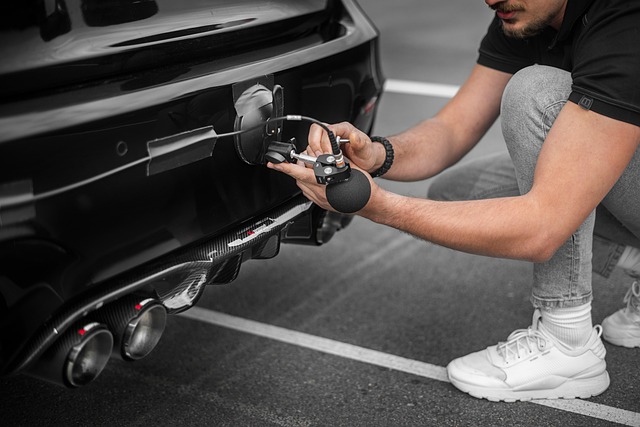Registering a car in California involves understanding the DMV’s VIN (Vehicle Identification Number) verification process, gathering essential documents, and following a step-by-step guide. This comprehensive article breaks down each component, from preparing required paperwork like proof of ownership and insurance to navigating the online or in-person registration process. Learn how to avoid common mistakes and ensure your vehicle remains legally registered and maintained in the Golden State.
- Understanding the DMV VIN Verification Process
- Gathering Necessary Documents for Car Registration
- Step-by-Step Guide to Registering Your Vehicle in California
- Common Mistakes to Avoid During Car Registration
- Aftercare: Maintaining Your Registered Vehicle in California
Understanding the DMV VIN Verification Process

When registering a car in California, understanding the DMV’s VIN (Vehicle Identification Number) verification process is crucial. This involves a thorough inspection to ensure the vehicle’s authenticity and history. The process typically includes checking the VIN against national databases to verify ownership, accident history, and outstanding recalls or liens. It also entails inspecting key components of the vehicle, like the engine, frame, and body panels, for any signs of damage or tampering.
One innovative way to streamline this process is through a mobile vin verifier or vin inspection. These services bring the verification to you, saving time and effort. Using advanced technology, they can quickly scan and decode the VIN, providing instant access to detailed vehicle history reports. This alternative approach is especially convenient for busy individuals who prefer not to navigate the traditional DMV procedures, ensuring a faster and more efficient car registration experience in California.
Gathering Necessary Documents for Car Registration

Before heading to the California Department of Motor Vehicles (DMV) to register your car, ensure you have all the required documents. This process typically includes proof of ownership, such as a vehicle title, and identification like a valid driver’s license or state ID card. It’s also crucial to have completed a DMV Form 46, which is the Application for Title and Registration.
For a seamless registration experience, consider conducting a DMV VIN verification using a mobile vin verifier. This involves scanning your car’s unique vehicle identification number (VIN) via an app on your smartphone. Many mobile vin inspection services offer this service, making it convenient to verify your vehicle’s history before visiting the DMV. Having these details ready will save you time and effort during the registration process.
Step-by-Step Guide to Registering Your Vehicle in California

Registering a car in California involves several steps, but with proper preparation, the process can be straightforward. Start by gathering all necessary documents, including your vehicle’s registration certificate from the previous state, proof of insurance, and a valid driver’s license. Next, head to a California Department of Motor Vehicles (DMV) office or use their online services for a convenient and often faster alternative.
The first step in the process is a crucial one: performing a DMV VIN verification. This involves checking your vehicle’s unique identification number (VIN) against their records. You can do this either by visiting a DMV office and presenting your vehicle’s documents, or through a mobile VIN verifier for a more efficient and sometimes more affordable option. Once your VIN inspection is complete, you’ll be on the right track to securing your new California registration.
Common Mistakes to Avoid During Car Registration

When registering your car in California, there are common pitfalls to avoid that can cause delays or even rejection of your application. One of the most crucial steps is ensuring accurate and up-to-date documentation. Many applicants make the mistake of submitting incomplete paperwork, so double-check all forms before filing.
Another frequent error is neglecting the DMV VIN verification process. This involves checking the vehicle’s identity through its unique VIN (Vehicle Identification Number). A reliable method to accomplish this is through a mobile vin inspection or using a specialized vin inspection service. By avoiding these common mistakes and staying vigilant during each step, you’ll streamline the car registration process in California.
Aftercare: Maintaining Your Registered Vehicle in California

Registering a car in California involves understanding the DMV’s VIN verification process, gathering essential documents, and following a step-by-step guide. By avoiding common mistakes and prioritizing aftercare maintenance, you can ensure your vehicle’s compliance and safety on California roads. Remember, a well-registered vehicle not only protects you legally but also contributes to a smoother driving experience.
